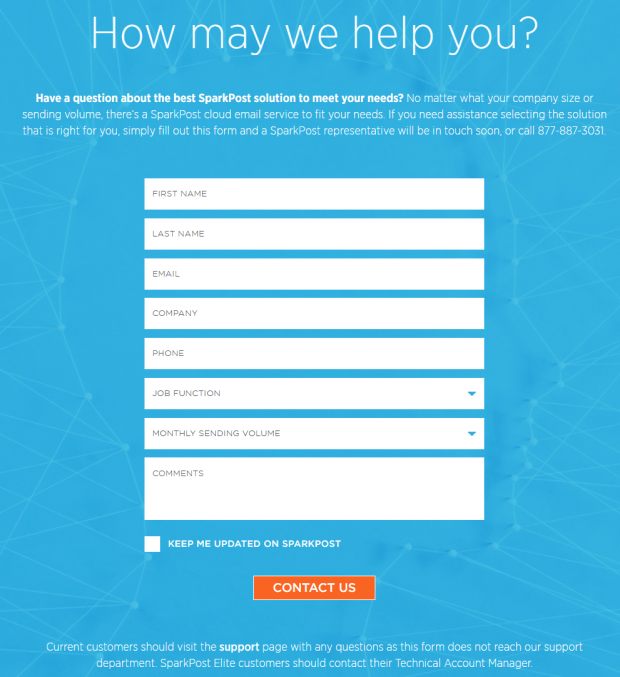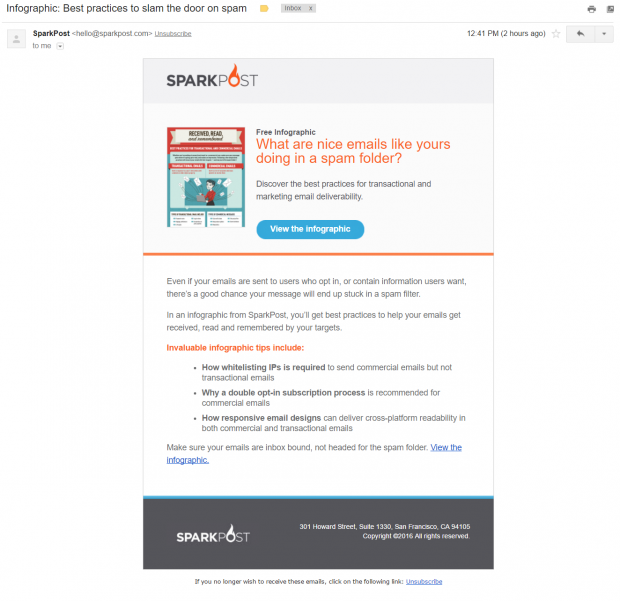Generally speaking, there are three types of emails: (1) traditional email used for communication, such as when you open up Gmail to fire an email to a friend, (2) one-time transactional emails companies or websites send to users that have explicitly requested it, such as when resetting a password on a website, and (3) regular non-transactional emails that companies or websites send to subscribers, such as newsletters.
There is rarely a problem with (1) or (2) because they are typically one-time emails in both situations. However, there is a big problem with how companies abuse (3). You see, when you send non-transactional emails like newsletters, you must have obtained explicit user consent. In other words, you can’t simply send newsletters — or similar type of emails — to people randomly… they must have explicitly consented to receive such newsletters.
Now, this issue of “consent” is a tricky one. There is the “industry standard” double opt-in consent. This is when a user signs up to receive regular emails, such as newsletters, and then explicitly confirms their email and subscription — a two step process. Double opt-in is the procedure we follow at FAILMID.
There are various situations and reasons why double opt-in is legitimately not used. For example, there is a large drop rate of people that explicitly want to receive regular emails but, for some reason or another, don’t perform the second confirmation. Many companies or websites don’t use double opt-in because of this drop — they follow the procedure that if a user has explicitly shown consent once, they do not need to perform the second opt-in step. This is called single opt-in.
The issue with single opt-in is consent — what signifies consent to send newsletters (or similar emails) to users? Many companies include a checkbox in their forms that users must explicitly check to receive newsletters (i.e. opt-in). Others, like here at dotTech, have the checkbox but the checkbox is pre-checked, so users have to uncheck to not receive newsletters (i.e. opt-out). There are also some companies that explicitly require subscription to newsletters (or similar emails) if you want to use their service — if you don’t want newsletters, you can unsubscribe after you get a newsletter or you can simply not use the website in question (i.e. take-it-or-leave-it). This is what we do at SharewareOnSale.
While the best way to go is double opt-in, there are legitimate reasons why companies and websites don’t. For example, we provide significant value to users by bringing daily free giveaways over at SharewareOnSale. We are of the opinion that receiving newsletters is a small price for you to pay to get freebies that we work hard to bring you. As such, we operate on a take-it-or-leave-it basis when it comes to newsletters — if you don’t want newsletters from us, you can either unsubscribe (we include unsubscribe links in every email) or simply not use our website.
Whatever method a company or website uses, all of the methods mentioned above are considered acceptable because there is one commonality among all them all: there is explicit user consent. In other words, it is (should be) clear to the user what is going on; there should be visible and readable text / checkboxes / whatever somewhere on the page or form in question that informs the user of what is going on. Thus, once a user is informed, they can take appropriate action. (Message-on-page is more important for non-double-opt-in because for double opt-in users are explicitly accepting to receive emails a second time, thus it being clear to them what is going on.)
Why am I telling you all this? So you can understand how questionable — if not illegal — the actions of SparkPost are.
You see, between our six websites, we send a lot of emails (all emails we send are with explicit user consent using one of the methods described above). To help send our high volume of emails, we need the services of companies that have networks specialized to send emails — such as Amazon, SendGrid, Dyn, Mandrill, etc. SparkPost is one such company. When you send high volume of emails, you can’t simply fire up Gmail and fire away.
I recently contacted SparkPost using their contact form inquiring about their services. This is what their contact form looks like currently and when I submitted the contact request:
You see there is one checkbox at the end of the form that allows you to opt-in to receive newsletters (or similar non-transactional emails) from SparkPost. I did not check this checkbox. There is no where else on the form, or on the contact page, that indicates submitting this form will subject you to newsletters (or similar non-transactional emails). In other words, I did not give consent for SparkPost to send me newsletters… I asked to have a representative contact me (one of their people did contact me).
Unfortunately, SparkPost — whose parent company Message Systems claims “[our] customers move over 3 trillion messages a year — more than 25 percent of the world’s legitimate email” — doesn’t seem to understand the rules of consent: I’ve been regularly receiving newsletters from them since I submitted the contact form… and yet I never consented to receive such emails. The most ironic of the emails is the one I got most recently:
While the title of this post is intended as tongue-in-cheek because, technically, SparkPost’s unsolicited newsletter does not teach how to spam but rather how to keep emails out of spam, the irony of SparkPost’s actions is not lost on me. (Although, it could be argued that teaching how to keep emails out of spam is the same thing as teaching how to spam… but we won’t get into that debate.)
Shame on you, SparkPost and Message Systems. I’m no lawyer, so I won’t claim your actions are illegal. However, they are definitely unethical. The fact that you are an email delivery specialist makes it worse — you should be the flag bearer of industry standard, not abusing it. Actions like this are what make it difficult for legitimate companies and websites to send legitimate email.

 Email article
Email article





